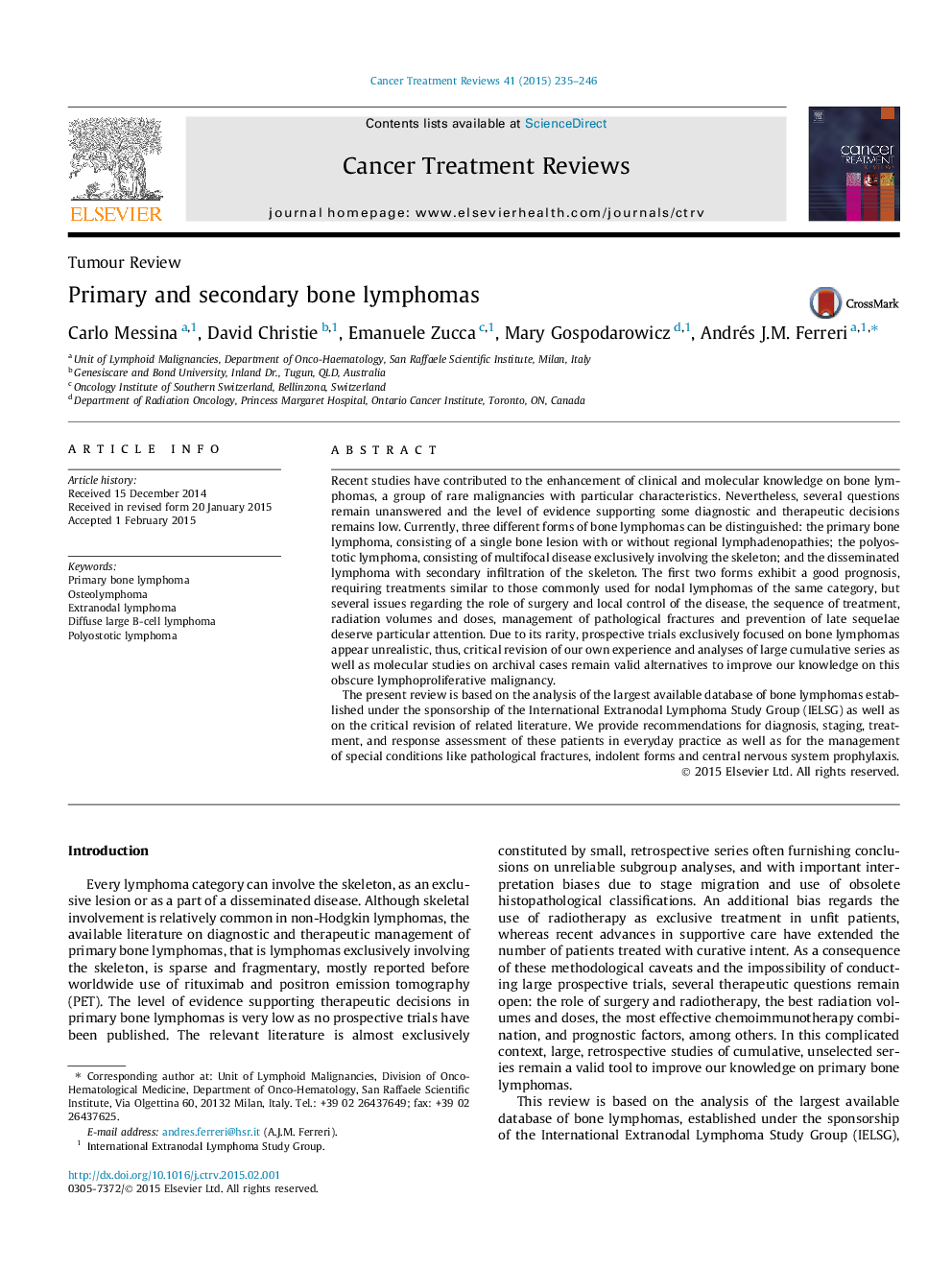| Article ID | Journal | Published Year | Pages | File Type |
|---|---|---|---|---|
| 3979829 | Cancer Treatment Reviews | 2015 | 12 Pages |
•Three clinical forms of bone lymphoma exist: the primary, the polyostotic and the secondary bone lymphoma.•Level of evidence supporting therapeutic decisions in these rare tumors is low, and prospective trials appear unrealistic.•This review is based on the analysis of the largest available database of bone lymphomas and of relevant literature.•We provide recommendations for diagnosis, staging and treatment of patients with bone lymphoma in everyday practice.•Special conditions like pathological fractures, indolent lymphomas and central nervous system prophylaxis are also discussed.
Recent studies have contributed to the enhancement of clinical and molecular knowledge on bone lymphomas, a group of rare malignancies with particular characteristics. Nevertheless, several questions remain unanswered and the level of evidence supporting some diagnostic and therapeutic decisions remains low. Currently, three different forms of bone lymphomas can be distinguished: the primary bone lymphoma, consisting of a single bone lesion with or without regional lymphadenopathies; the polyostotic lymphoma, consisting of multifocal disease exclusively involving the skeleton; and the disseminated lymphoma with secondary infiltration of the skeleton. The first two forms exhibit a good prognosis, requiring treatments similar to those commonly used for nodal lymphomas of the same category, but several issues regarding the role of surgery and local control of the disease, the sequence of treatment, radiation volumes and doses, management of pathological fractures and prevention of late sequelae deserve particular attention. Due to its rarity, prospective trials exclusively focused on bone lymphomas appear unrealistic, thus, critical revision of our own experience and analyses of large cumulative series as well as molecular studies on archival cases remain valid alternatives to improve our knowledge on this obscure lymphoproliferative malignancy.The present review is based on the analysis of the largest available database of bone lymphomas established under the sponsorship of the International Extranodal Lymphoma Study Group (IELSG) as well as on the critical revision of related literature. We provide recommendations for diagnosis, staging, treatment, and response assessment of these patients in everyday practice as well as for the management of special conditions like pathological fractures, indolent forms and central nervous system prophylaxis.
